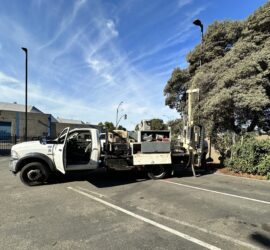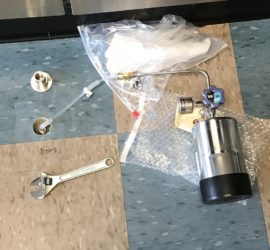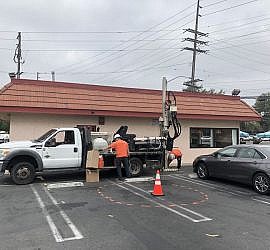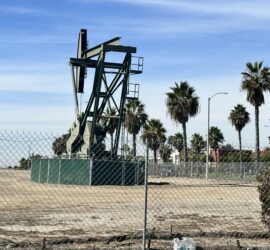Methane Inspection for Soil Gas Mitigation
The purpose of a methane inspection is to test a property for subsurface methane and hydrogen sulfide gas and determine the proper methane mitigation design parameters for future development. This process is a soil inspection of the hazardous gases underlying future structures. In fact, awareness of the hazards of methane soil gas rises from an explosion in Los Angeles in 1985. Since then, various building departments and public works agencies have recommended a methane soil gas survey and/or a mitigation plan within specific methane hazard zones. Updated April 9, 2024.
Click Here For LADBS Methane Barrier Deputy Inspection
Reasons for Methane Inspection
A methane inspection has one purpose, and that is to determine what design hazard level a property categorizes under. In this process, a geologist drills numerous boreholes into the subsurface and collects multiple soil and soil vapor samples for analysis. The results of a methane inspection report are objective and purely base on the concentrations of methane gas which exist in the underlying soil. No variances in testing are allowable to alter the level of a site. Using the results of a methane inspection report, the local building department establishes a series of site-specific methane mitigation requirements for a property, in order to safeguard future occupants from explosion hazards. From there, geologists and engineers work together to design a mitigation system, in accordance with building department codes.
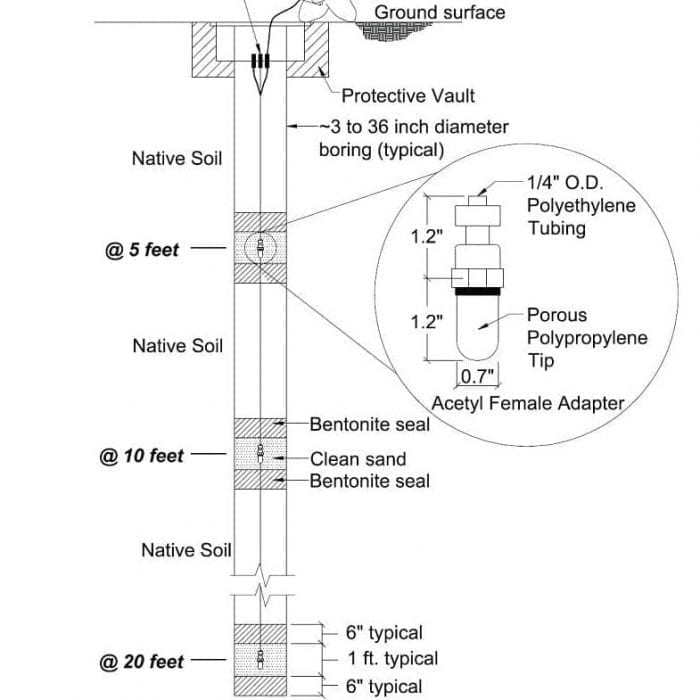
Where is a Methane Inspection a Requirement?
During the late 1800s and early 1900s, oil and gas production was predominantly practiced in central and southern California. The northernmost areas of California were primarily used for natural gas production. Consequently, the City of Los Angeles now dedicates these areas as high-risk “Methane Zones.” As a result, these zones require methane soil gas surveys and mitigation before undergoing construction or re-development. In fact, many other public works agencies across the nation follow the same standards. Citywide methane mitigation requirements are a part of LA City Ordinance No. 175790 and Ordinance No. 180619.
Methane is Colorless & Odorless
Methane is a colorless and odorless gas that can migrate underground. Accumulations of these gasses are associated with oil and gas fields, natural gas extraction wells, coal mines, and landfills. In fact, migration of the gas occurs through soil and structure foundations. As a result, the gas can also concentrate inside buildings, above ignitable levels. Consequently, vapor intrusion scenarios in methane zones put buildings at risk of violent explosions.
Stopping Soil Gas Intrusion
Upon completion of a methane inspection at a job site, an environmental professional engineer can begin preparing a methane mitigation plan. This system aims to eliminate the hazards of methane gas intrusion overall. For instance, a special barrier underlying the foundation can block the gas from entry. In addition to methane soil gas investigations, Geo Forward also provides methane mitigation design services and methane mitigation plans for all types of construction projects.
Methane Impervious Barrier
A methane barrier is the actual membrane underlying a building slab or retaining wall, to stop the intrusion of methane soil gas. This substance requires the inspection services of a professional deputy inspector. In fact, all of the methane mitigation construction process requires oversight by agency officials.
SoCal Oversight Jurisdictions
Unincorporated cities in Los Angeles County fall under the jurisdiction of the Los Angeles County Methane Mitigation Unit. As a result, LA County generally requires methane soil gas surveys and inspections on construction sites within 1,000 feet of a landfill or 300 feet of an oil & gas well (Click Here to view the County of Los Angeles Building Code). Otherwise, sites within the City of Los Angeles fall under the jurisdiction of the Los Angeles Department of Building and safety. Thus, requiring methane testing and mitigation. Moreover, the City of Huntington Beach and other portions of Orange County also require a methane investigation to assess methane risk.
Building Department Standards – Methane Inspection for Soil Gas
Geo Forward offers methane inspection services to meet the requirements of all building jurisdictions in California. For instance, the City of Los Angeles, County of Los Angles, Huntington Beach Fire Department, Ventura County, etc.). Sampling and testing plans include a determination of the site design level, as well as locating nearby zones, boundaries, or hazards. Moreover, the fieldwork process includes the installation of soil gas probes and air quality analysis. A standard methane inspection evaluates the soil gas underlying property, for fast results from the field.
Preliminary Methane Inspection for Real Estate Due Diligence
When a comprehensive methane inspection is NOT a requirement by local building departments, property owners can also request a preliminary test. This is a basic screening process for due diligence and risk assessment purposes. For example; a shallow soil test that tests as deep as 5 feet, rather than 20 feet. If the findings of a preliminary soil gas investigation warrant additional testing, a full-scope methane soil test will then apply. Geo Forward offers preliminary inspection services for all project types.
Methane Mitigation Plans (Post Methane Inspection)
Local building departments may also require methane mitigation plans to reduce health-related dangers such as asphyxiation or explosion. Geo Forward offers a variety of methane mitigation services in all areas of California.

